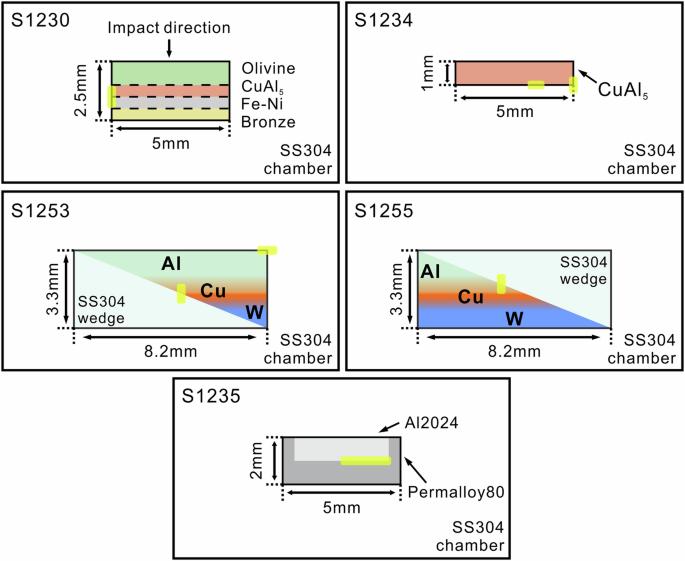Quasicrystal synthesis by shock compression
IF 5.9
2区 化学
Q1 CHEMISTRY, MULTIDISCIPLINARY
引用次数: 0
Abstract
Quasicrystals are of interest because of their unique nonperiodic structures and physical properties. Motivated by naturally occurring icosahedral AlCuFe- and decagonal AlNiFe-phases hosted in a shocked meteorite, different laboratories have undertaken a series of shock recovery experiments to understand their formation mechanism. Shock experiments generate a complex series of processes and conditions, including a near-instantaneous excursion to high pressure and high temperature, large shear stresses, local melting, rapid decompression, fast quenching and post-shock annealing. This highly dynamic scenario offers a very useful but imperfect tool for exploring the stability of novel alloys, such as quasicrystals. So far, all the shock-synthesized quasicrystals differ considerably in composition from any thermodynamically stable or metastable quasicrystals synthesized by metallurgical techniques at low pressure, leaving plenty of questions to be answered about their formation conditions and their nucleation and growth mechanisms occurring during shock experiments. In this Perspective, we summarize the previous studies of shock-synthesized quasicrystals and discuss the advantages and difficulties caused by the experimental complexity. We also propose a few directions for future experiments to better control the shock conditions and understand the properties of quasicrystals. Shock compression is a highly dynamic, useful tool for exploring the stability of novel alloys such as quasicrystals, but their formation conditions and the nucleation-growth mechanisms occurring during shock experiments remain largely elusive. Here, the authors provide a summary of quasicrystal shock-syntheses and discuss the advantages and difficulties caused by the experimental complexity.

通过冲击压缩合成准晶体。
准晶体因其独特的非周期性结构和物理特性而备受关注。受冲击陨石中天然存在的二十面体 AlCuFe 相和十边形 AlNiFe 相的启发,不同实验室进行了一系列冲击复原实验,以了解它们的形成机制。冲击实验产生了一系列复杂的过程和条件,包括近乎瞬时的高压和高温、大剪切应力、局部熔化、快速减压、快速淬火和冲击后退火。这种高度动态的情况为探索新型合金(如准晶体)的稳定性提供了一个非常有用但并不完美的工具。迄今为止,所有冲击合成的准晶体在成分上都与任何在低压下通过冶金技术合成的热力学稳定或可蜕变的准晶体有很大不同,因此关于它们的形成条件及其在冲击实验中的成核和生长机制还有很多问题有待解答。在本视角中,我们总结了以往对冲击合成准晶体的研究,并讨论了实验复杂性带来的优势和困难。我们还提出了未来实验的几个方向,以便更好地控制冲击条件和了解准晶体的特性。
本文章由计算机程序翻译,如有差异,请以英文原文为准。
求助全文
约1分钟内获得全文
求助全文
来源期刊

Communications Chemistry
Chemistry-General Chemistry
CiteScore
7.70
自引率
1.70%
发文量
146
审稿时长
13 weeks
期刊介绍:
Communications Chemistry is an open access journal from Nature Research publishing high-quality research, reviews and commentary in all areas of the chemical sciences. Research papers published by the journal represent significant advances bringing new chemical insight to a specialized area of research. We also aim to provide a community forum for issues of importance to all chemists, regardless of sub-discipline.
 求助内容:
求助内容: 应助结果提醒方式:
应助结果提醒方式:


